Tasting wine and nature
“Back to nature, the only future”. I am inspired by this quote from my friend and gardener Annick Peauger.
Living most of the year in Northern California many weekends are spent in communion with its stunning nature. Often we drive to the wine country only 30 minutes away for a walk and a fabulous meal, an obligatory stop at the roast duck stand in the Oxbow Public Market in Napa or to take friends and visitors on wine tasting adventures. Right now and at the end of our Californian winter, is my preferred time to drive around the Napa and Sonoma valleys because the trees are bare, the fields are green, the brown woody vines are exposed amongst a sea of pink milkweed and bright yellow wild mustard flowers that the monarch butterflies feast on and the hills are covered in orange California poppies. Through the clumps of the massive ancient moss-covered oaks you can see the beautiful farms and estates that line the valleys, otherwise near invisible because of the leaves.
My favorite vineyard is Quintessa , a stunning estate in the heart of the renowned Rutherford appellation of Napa Valley, cradled amongst five hills and adorned by a lake. As you drive up you are struck by the bold and modern winery building. Designed by Walker Warner Architects and unique in its architecture the “graceful crescent-shaped design was carefully considered for its environmental sensitivity and fits snugly into an eastern-facing hillside, disrupting little in the way of the aesthetics or natural beauty of the property. A facade of indigenous stone and natural landscaping of native plants and oak trees creates a subtle presence amidst the diverse terrain”.
At Quintessa they practice biodynamic viticulture. Pre-dating the organic movement and stemming from the ideas of Rudolf Steiner ( 1861-1925) , the principles and practices of biodynamics are based on his spiritual/practical philosophy, called anthroposophy, which includes understanding the ecological, the energetic, and the spiritual in nature.
This type of viticulture views the farm as a cohesive, interconnected living system and embodies the ideal of ever-present ecological self-sufficiency.
At Quintessa the communion with nature is vital and ever present : The most important lesson in diversity learned at Quintessa is the need to keep the soil alive with a variety of plant life. Pests are managed through the use of organic materials, cover crops and other innovative practices, and only when required. From it’s very inception, the vineyard has been maintained with a strict criteria of care for the soil and the environment.
Above : the Quintessa winery building designed by Walker Warner Architects.
The estate includes a valley, a lake, a river; five hills, four microclimates, and many soil types, as well as rich flora and fauna. The diversity of exposure, elevation, and microclimate and soil type produce 40 very different wine lots from the 26 different vineyard blocks. We believe the diversity of the property (valleys, terraces, hilltops, foothills and riverside) contribute to the high quality and uniqueness of the fruit.
And here comes the best part: the wine tasting pavilions. I have always thought that when the weather is good and the sun is shining , you do not want to be inside in a damp cold wine cellar for too long. Of course it is essential to see how and where the wine is made and stored, but as to having the whole experience, that is, the full communion with nature and the grapes, I dream of being outside amongst the trees and vines, smelling and taking in the sounds of nature, all 5 senses stimulated.
Biodynamic winery and sustainable buildings. Working with Walker Warner Architects Maca Huneeus collaborated on the design and execution of the 3 wine-tasting pavilions which are perched on a ridge above the original winery . Each pavilion is a mini architectural wonder. Comprised of a series of floating planes and surfaces, the structures frame the stunning wine country views and open seamlessly to the surrounding hillsides. Materials such as wood, natural stone and concrete echo the original winery building and offer warmth and welcome .
Maca Huneeus tells Fashionsphinx : “The concept was to take the wine tasting experience from the cellar to nature. This is a first in Napa. Basically we did not want people to drive all the way here to be tasting underground. The whole idea was to make the pavilions sustainable, monastic, austere and about not interrupting nature. I was involved with all the details of the design. We used a sliding mechanism like that of old barn doors in order to make the slated shades which create beautiful light and shadow patterns on the walls and give the pavilions much needed shade during our blistering summers. Even the concrete has a country feel to it as we gave it texture to resemble wood. The floors are clean and the large rectangles were inspired by the Mies Van Der Rohe Barcelona pavilion walls. Everything is sustainable including all the building materials, tasting tables and benches. The beauty is that every opening of the architecture frames nature in the most idyllic way and is landscaped to let the natural habitat grow back at will”.
For these pavilions Maca Huneeus has been awarded the Sustainable Commercial Award 2015.
The below photographs were taken last week by Maca Huneeus and I include them because right now it is early spring and as I wrote above, the landscape is very different . Lush, green hilltops frame the bald vines and mossy bare oaks. The grass around the pavilions is growing back and it becomes part of the building.
All photographs by Matthew Williams, except where specified.


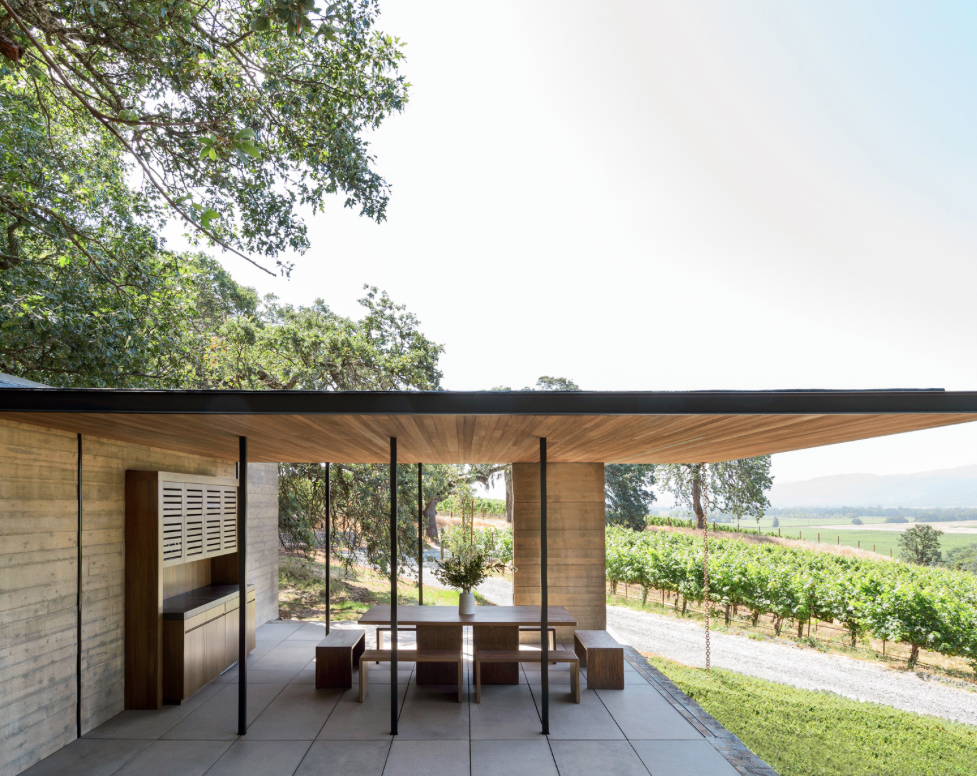
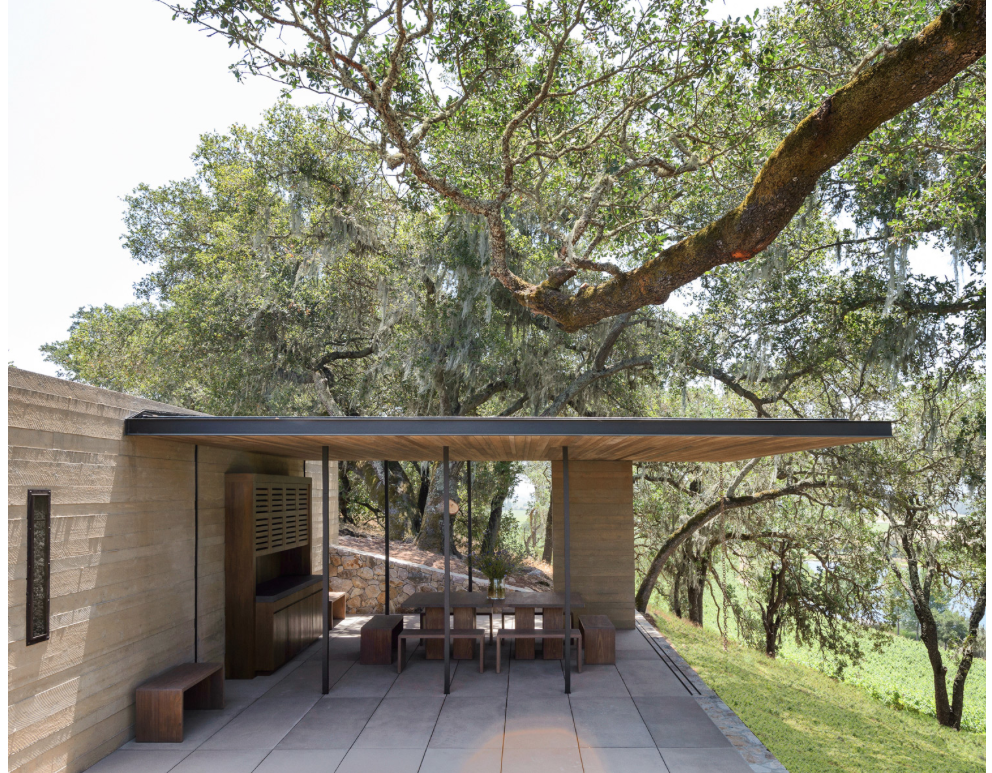



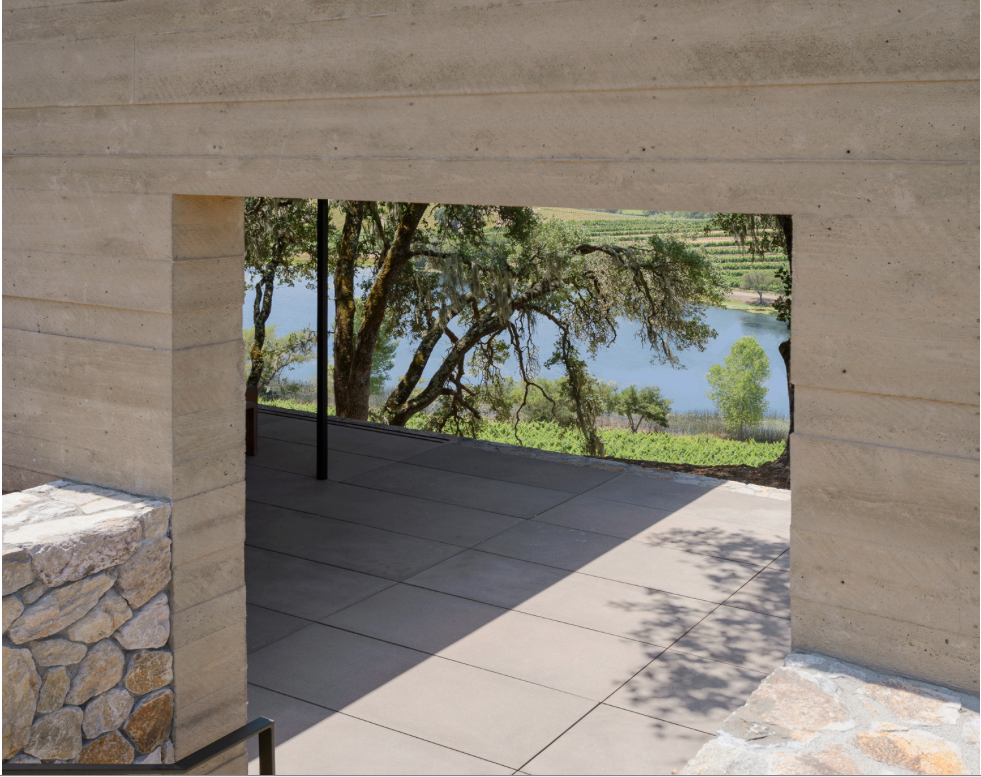
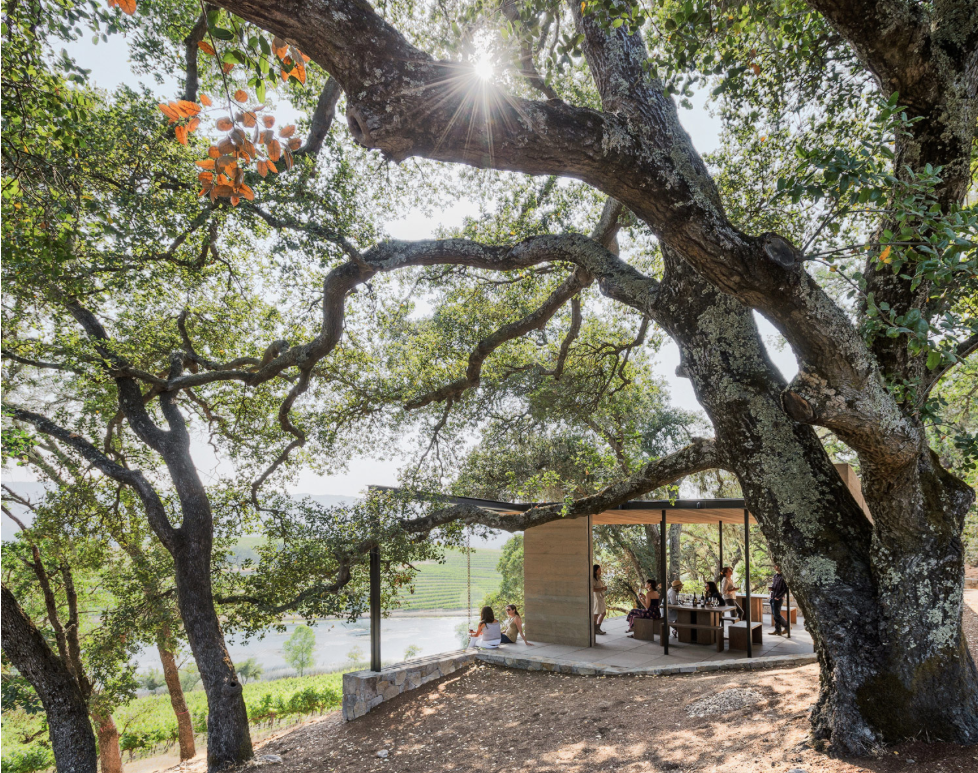
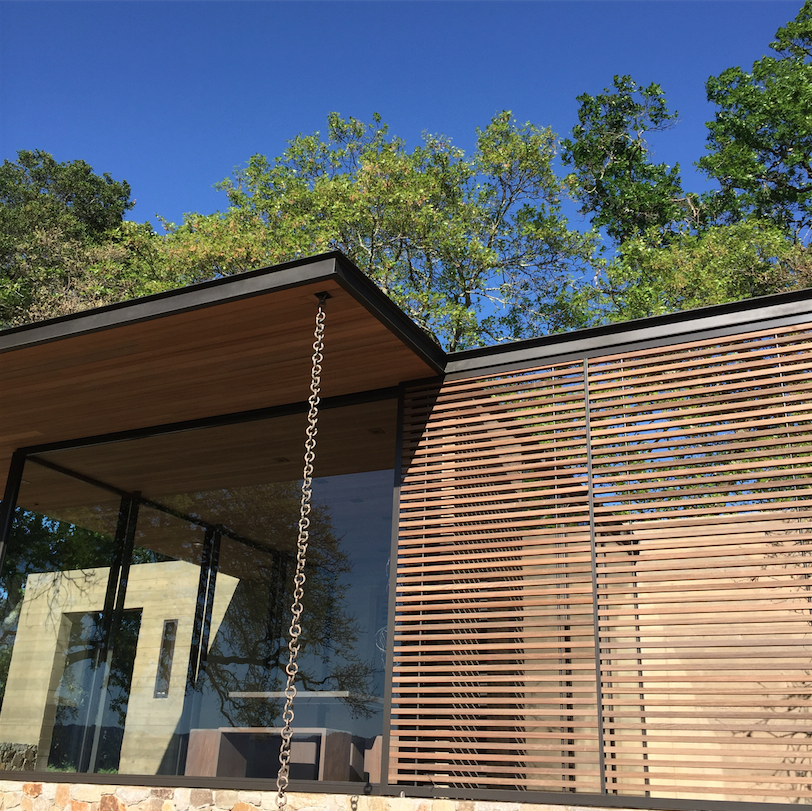
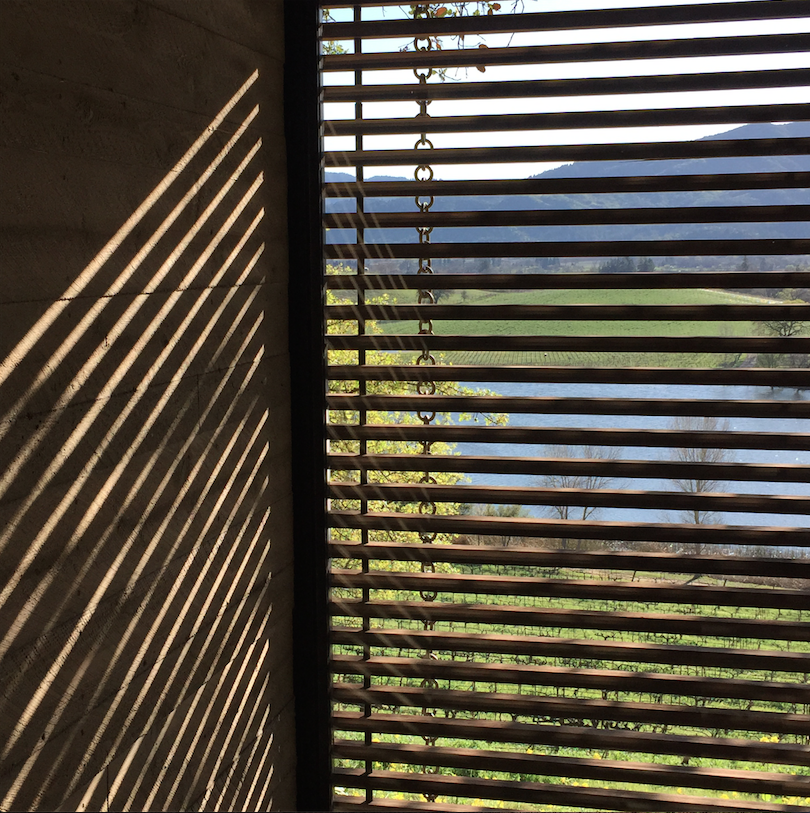
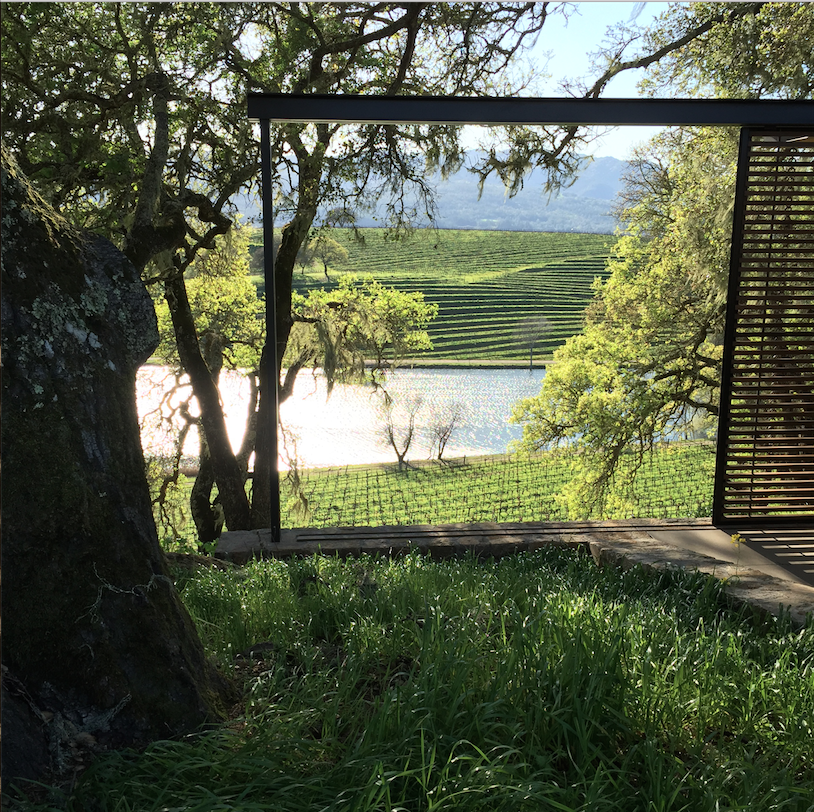
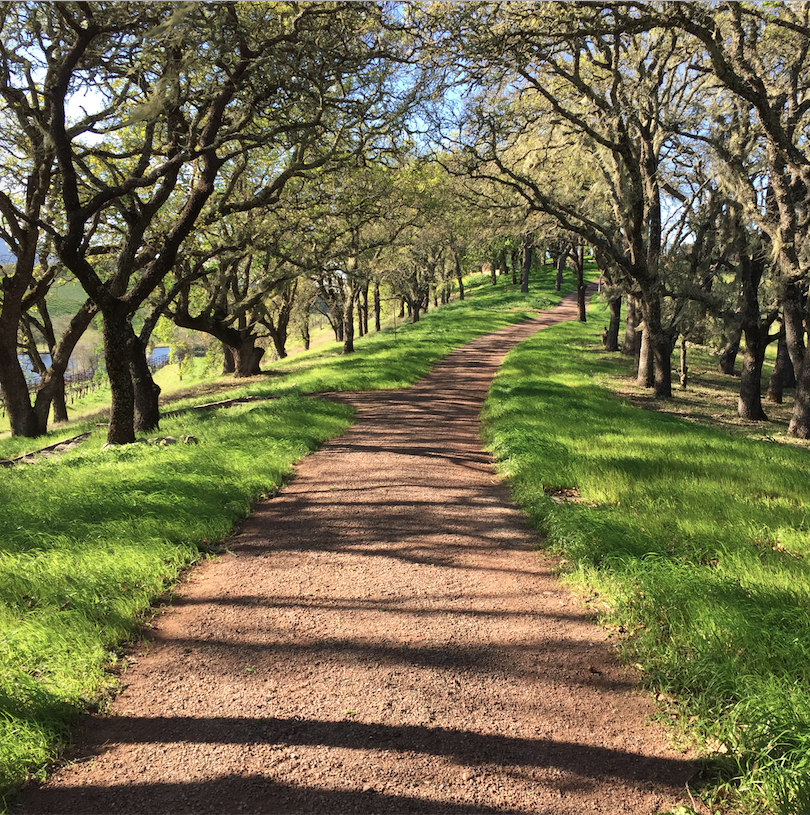



my dear Eugenia your articles are always beautiful, and interesting, exquisite and concerned about the environment that is the source, thanks
a spanish gardener
Thank you! that is the purpose really…..I hope . One garden , one natural sustainable project at a time
xxxxxx
Thank you for sharing all those amazing vineyards and buildings! However, as you know, i don’t like wine (it doesn’t like me either). So, would you be so sweet as finding me spots where thez grow coca cola or even sweet cider. It seems that cola bulbs are quite hard to find over here but being in the States, it shouldn’t be such a problem for you. With a meal of crabs such as the one we shared with Paul, it would just be heaven.
Hahhhahhahha ! yes….consider it done ! and thanks for the quote !
Eugenia you have just transported me to a moment in time that I hope to spend with you soon sipping wine in those beautiful pavillions on a warm sunny nothern Californian day. I love everything about the this winery from the architecture to the philosophy and can’t wait to taste their wine! it must be pretty amazing.
LETS DO IT !!!!!!
wow!!!!
I like the wine before tasting it, xxx
The wines are incredible! so the wine tasting experience must be unique too !
have seen some amazing vineyards in my life….France, Italy, Spain…..but none with outdoor tasting pavilions like these. Such a brilliant idea. Do send to your wine-loving friends